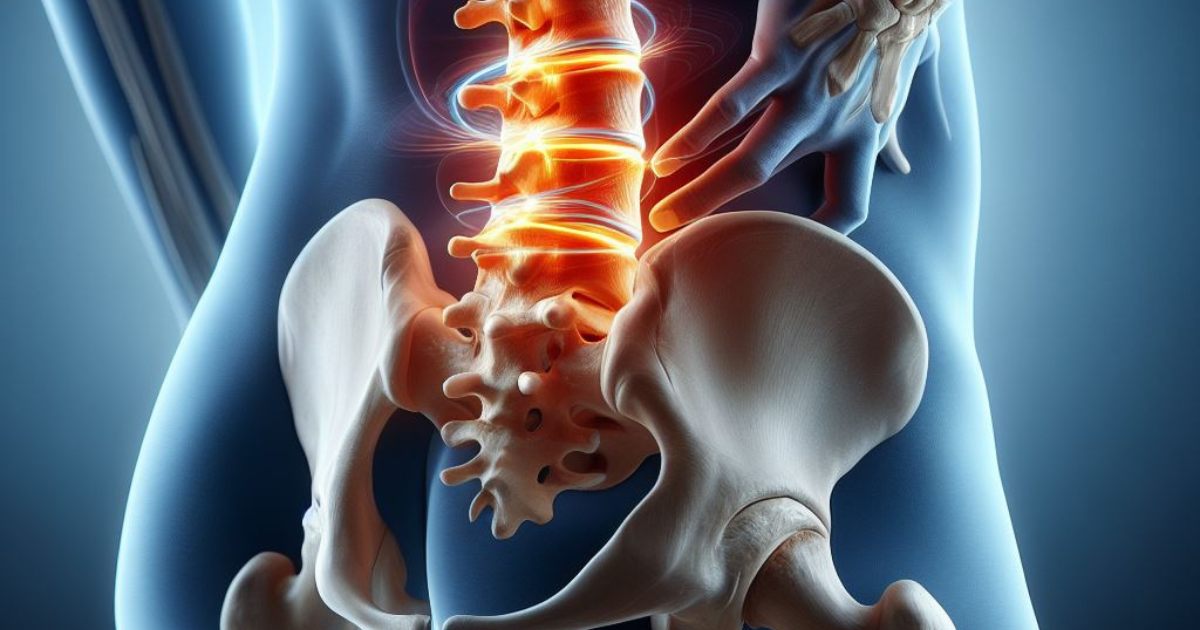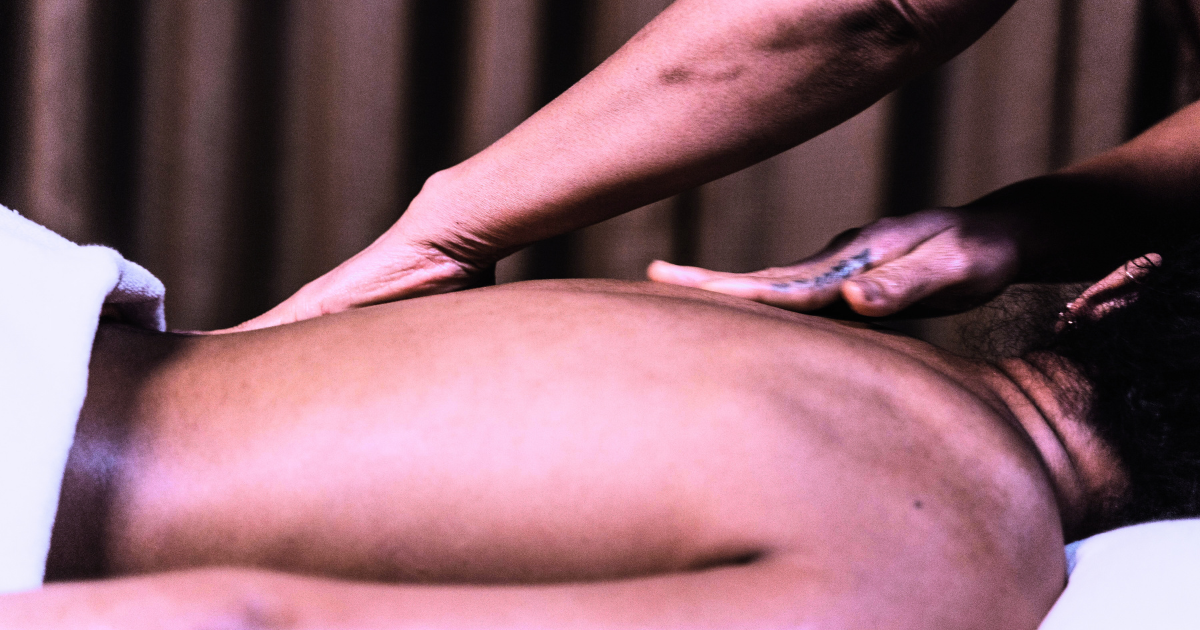Signs Herniated Disc is Healing: My Personal Journey
Introduction: Signs Herniated Disc is Healing
Living with a herniated disc can be tough, but recognizing the signs of improvement is crucial. In this article, I’ll share insights gained from personal experience, shedding light on the signs that indicate your herniated disc is on the path to healing.
Understanding Herniated Discs
Before diving into the healing process, let’s briefly understand what a herniated disc is. It occurs when the soft center of a spinal disc pushes through a crack in the tougher exterior. This can lead to pain, numbness, or weakness in an arm or leg.
The Impact on Daily Life
The consequences of a herniated disc extend beyond physical discomfort. Everyday activities become daunting, affecting one’s quality of life. Now, let’s explore the initial symptoms that may indicate a herniated disc and the journey towards recovery.
Understanding Herniated Discs

Living with a herniated disc means dealing with a spinal condition where the inner gel-like substance of a disc pushes through its outer layer. This can result in discomfort, pain, and other challenging symptoms.
How It Happens
Picture the spine as a stack of discs acting as cushions between vertebrae. A herniation occurs when the softer inner material pushes out due to a tear or weakened area in the disc’s exterior. This can lead to nerve compression, causing pain and affecting daily activities.
Common Causes
Several factors contribute to herniated discs, including aging, wear and tear, and sudden injuries. Understanding these triggers is key to managing and preventing further complications. Now, let’s explore the signs that indicate your herniated disc is on the path to healing.
Recognizing Initial Symptoms
When a herniated disc disrupts your life, identifying the early signs is crucial for timely intervention and effective recovery. Let’s shed light on these initial symptoms, helping you navigate this challenging experience.
Pain Patterns
One of the earliest signals is localized or radiating pain. This discomfort often follows the path of the affected nerve, causing sharp, shooting pain or a persistent ache. Understanding your body’s pain signals aids in recognizing the presence of a herniated disc.
Numbness and Tingling Sensations
As the herniated disc presses on nerves, you may experience numbness or tingling in specific areas. This sensation, known as paresthesia, can extend to the arms, legs, or even the extremities. Recognizing these sensations is crucial in gauging the progression of the condition.
Muscle Weakness and Coordination Issues
A herniated disc may impact muscle function, leading to weakness or coordination difficulties. If you notice a decline in strength or find simple tasks more challenging, it could be a sign that your body is signaling the presence of a herniated disc. The pain could be felt on the back while lifting heavy objects or when performing deadlifts.
Understanding these initial symptoms lays the foundation for early intervention. Now, let’s delve into the intricate healing process and the positive indicators that your herniated disc is on the mend.
The Healing Process

Let’s explore the various factors that influence this process and delve into my own insights gained from navigating the road to recovery.
Factors Influencing Healing
Several factors play a crucial role in the healing of a herniated disc. Adequate rest, proper nutrition, and maintaining a healthy lifestyle contribute significantly to the recovery process. Understanding and addressing these factors can positively impact the speed and effectiveness of healing.
The Importance of Patience
Healing is not a linear process, and timelines may vary from person to person. Patience becomes a valuable companion during this journey. Recognizing that progress may come in small steps is essential for maintaining a positive mindset throughout the recovery process.
Professional Guidance and Therapy
Consulting healthcare professionals, such as physical therapists or chiropractors, can provide personalized guidance. Tailored exercises and therapeutic interventions can accelerate healing and enhance overall well-being.
My Personal Experiences with the Recovery Journey
Having walked this path myself, I understand the challenges and triumphs that accompany the healing process. From adjusting daily activities to embracing therapeutic exercises, I’ve learned valuable lessons that I’m eager to share. Join me as I recount personal experiences and offer insights into the signs that your herniated disc is on the mend.
Visible Signs of Improvement
Witnessing tangible improvements in your body is a reassuring milestone in the journey of healing from a herniated disc. Let’s explore the physical indicators that signify your body is on the mend.
Diminished Pain and Discomfort
As the healing process progresses, a noticeable reduction in pain and discomfort becomes apparent. Initially sharp or persistent pain may subside, allowing you to engage in daily activities with greater ease. Pay attention to how your body responds to movements and identify areas where pain diminishes.
Restored Range of Motion
A healing herniated disc often brings back flexibility and range of motion. Movements that were once restricted or caused discomfort may become more fluid. Celebrate these incremental improvements, as they indicate positive shifts in your spinal health.
Improved Posture and Stability
A healing disc contributes to enhanced posture and stability. You may find it easier to maintain proper alignment, reducing strain on your spine. This improvement not only aids in healing but also serves as a preventive measure against future issues.
Gradual Return to Activities
As your body heals, you’ll likely experience a gradual return to normal activities. Whether it’s walking, exercising, or engaging in hobbies, the ability to participate in these activities with less difficulty is a promising sign of recovery.
These visible signs underscore the progress made on your healing journey. Now, let’s delve into the psychological aspects and mental shifts that accompany the recovery process.
Psychological Shifts
Recovering from a herniated disc isn’t just a physical journey—it involves navigating various mental aspects. Let’s explore the psychological shifts that accompany the process of healing.
Coping with Initial Frustrations
The early stages of recovery can be mentally challenging. Coping with limitations, adapting to lifestyle changes, and managing frustration are integral aspects. Acknowledging and addressing these emotions play a crucial role in maintaining a positive mindset.
Building Resilience
Resilience becomes a companion during the healing process. Overcoming setbacks, both physical and emotional, contributes to building mental strength. Understanding that progress may have its ups and downs fosters a resilient outlook on the journey ahead.
Embracing a Positive Mindset
Maintaining a positive mindset is a powerful catalyst for healing. Focus on the improvements, no matter how small, and celebrate achievements along the way. This optimistic approach positively influences both mental and physical well-being.
Patience and Long-Term Perspective
Recovery requires patience and a long-term perspective. Setting realistic expectations and acknowledging that healing takes time prevent undue stress. Embracing each step as a part of the larger healing journey contributes to a more balanced mental state.
These psychological shifts are vital aspects of the overall recovery process. Now, let’s explore lifestyle changes that support healing and well-being after a herniated disc.
Lifestyle Changes for Recovery
Embarking on a journey to heal from a herniated disc involves more than medical interventions; it requires adopting lifestyle changes that support your well-being. Let’s explore the significance of maintaining proper posture and incorporating exercise into your daily routine.
Prioritizing Proper Posture
Proper posture is a cornerstone of herniated disc recovery. Being mindful of how you sit, stand, and move minimizes stress on your spine. Utilize ergonomic furniture, maintain a neutral spine position, and avoid prolonged periods of sitting to support the healing process.
Ergonomics in Everyday Activities
Whether working at a desk or performing household tasks, integrating ergonomic principles is crucial. Adjusting the height of your workstation, using lumbar support, and avoiding slouching contribute to a spine-friendly environment.
Incorporating Core-Strengthening Exercises
A strong core provides essential support to your spine. Engage in exercises targeting core muscles, such as planks and gentle abdominal workouts. Strengthening these muscles enhances spinal stability and aids in the prevention of future issues.
Low-Impact Aerobic Activities
While high-impact exercises might be off the table, low-impact aerobic activities like walking, swimming, or cycling are beneficial. These activities promote cardiovascular health, contribute to overall well-being, and are gentle on the healing process.
Prioritizing these lifestyle changes not only supports your recovery but also cultivates habits that contribute to long-term spinal health. Now, let’s explore the importance of seeking professional guidance in the healing journey.
Professional Guidance
Navigating the complexities of healing from a herniated disc often necessitates seeking professional guidance. Let’s explore the importance of obtaining medical advice and therapy as integral components of your recovery journey.
Consulting Healthcare Professionals
Seeking guidance from healthcare professionals is paramount in understanding the specifics of your condition. Orthopedic specialists, neurologists, or physical therapists can provide tailored advice based on your individual circumstances, ensuring a comprehensive approach to recovery.
Diagnostic Precision for Informed Decisions
Medical professionals employ diagnostic tools to pinpoint the exact nature and severity of your herniated disc. This precision allows for informed decision-making regarding treatment options, personalized exercise regimens, and lifestyle adjustments.
Tailored Therapeutic Interventions
Physical therapy plays a crucial role in herniated disc recovery. A skilled therapist can design exercises that target your specific needs, enhancing flexibility, strength, and overall spinal health. Regular therapy sessions contribute significantly to the healing process.
Medically Supervised Treatment Plans
For severe cases, medical interventions such as injections or, in rare instances, surgery may be recommended. A medical professional can guide you through these decisions, ensuring a well-informed and monitored treatment plan aligned with your recovery goals.
Seeking professional guidance not only accelerates recovery but also provides a comprehensive understanding of your herniated disc journey. Now, let’s explore the importance of maintaining patience and realistic expectations throughout the healing process.
Patience in the Healing Process
Recovering from a herniated disc demands more than physical effort—it requires a considerable amount of patience. Let’s delve into the importance of managing expectations and maintaining a realistic perspective throughout the healing journey.
Understanding the Variable Nature of Healing
Healing is a variable process, unique to each individual. Recognizing that progress may unfold at its own pace is essential. Embrace the journey, understanding that some days may showcase noticeable improvements, while others may require a bit more patience.
Setting Realistic Timelines
Establishing realistic timelines for recovery prevents undue stress. While it’s natural to desire swift healing, it’s equally crucial to acknowledge that the body heals in its own time. Setting achievable milestones helps in celebrating progress without setting unrealistic expectations.
Adapting to Fluctuations in Symptoms
Symptoms may fluctuate during the healing process. This doesn’t necessarily indicate a setback but rather underscores the dynamic nature of recovery. Be attentive to your body, communicate changes with healthcare professionals, and adapt your approach as needed.
Cultivating a Positive Mindset
Patience is closely tied to maintaining a positive mindset. Focus on the improvements, no matter how small, and celebrate each milestone. A positive outlook not only supports your mental well-being but also contributes to the overall effectiveness of the healing process.
Navigating the nuances of patience in healing is a crucial aspect of the journey. Now, let’s explore the significance of positive reviews and ratings from others who have walked a similar path.
Positive Reviews and Ratings
Amidst the challenges of healing from a herniated disc, the experiences of others can be invaluable. Let’s explore the significance of gathering positive reviews and ratings from individuals who have walked a similar path.
Learning from Shared Experiences
Seeking feedback from individuals who have undergone herniated disc recovery provides insights beyond medical advice. Personal experiences shed light on coping strategies, unexpected victories, and the nuances of the healing process that may not be apparent in clinical discussions.
Building a Supportive Community
Positive reviews and ratings contribute to the formation of a supportive community. Engaging with individuals who share similar struggles fosters a sense of understanding and solidarity. This community becomes a source of encouragement, tips, and shared victories.
Identifying Effective Strategies
Through reviews, you can identify effective strategies that have worked for others. Whether it’s specific exercises, lifestyle adjustments, or emotional coping mechanisms, firsthand accounts offer practical insights that complement professional advice.
Celebrating Milestones Together
Positive reviews often highlight milestones achieved by individuals during their recovery. These stories of triumph inspire hope and motivate others to persevere through the challenges. Celebrating collective victories creates a positive atmosphere that uplifts everyone involved.
Gathering feedback from those who’ve traveled a similar path provides a holistic perspective on the healing journey. Now, let’s explore encouraging stories that serve as beacons of hope for individuals navigating herniated disc recovery.
Common Misconceptions
Navigating the path to healing from a herniated disc often involves addressing prevalent myths and misconceptions. Let’s delve into the realities of herniated disc recovery, dispelling common misunderstandings that may hinder the journey.
Myth: Quick Fixes Guarantee Instant Relief
Addressing the misconception that quick fixes ensure instant relief is crucial. Herniated disc recovery is a gradual process that requires patience and a holistic approach. While some interventions provide relief, sustainable healing involves a combination of factors.
Reality: Holistic Approach for Sustainable Healing
The reality is that sustainable healing involves lifestyle changes, professional guidance, and time. Quick fixes may offer temporary relief, but a comprehensive approach that considers long-term spinal health is essential for sustained well-being.
Myth: Bed Rest is the Ultimate Solution
Contrary to the belief that prolonged bed rest is the ultimate solution, it’s essential to recognize the importance of balanced activity. While rest is crucial in the initial stages, excessive immobility can hinder recovery and contribute to muscle atrophy.
Reality: Gradual Return to Activity
The reality is that a gradual return to activity, under professional guidance, is beneficial. Engaging in appropriate exercises, maintaining proper posture, and staying active within pain tolerance contribute to a more robust and resilient recovery.
Dispelling these misconceptions is vital in fostering a realistic understanding of herniated disc recovery. Now, let’s explore realistic timelines, setting expectations for the duration of the healing process.
Realistic Timelines

Understanding the timeline of recovery from a herniated disc is essential for managing expectations and fostering a patient mindset. Let’s explore the realistic timelines involved in the healing process and set expectations for a gradual but steady recovery.
Expectation: Rapid Recovery Within Weeks
It’s a common expectation that recovery from a herniated disc should occur rapidly, often within a few weeks. While some initial relief may be experienced, expecting a complete recovery in a short timeframe may lead to frustration and disappointment.
Reality: Gradual Healing Over Months
The reality is that herniated disc recovery is a gradual process that unfolds over months. The body requires time to repair and strengthen. Understanding and accepting this timeline sets the stage for a more patient and resilient approach to the healing journey.
Expectation: Linear Progression Without Setbacks
Many anticipate a linear progression without setbacks, assuming continuous improvement. However, the recovery process is characterized by fluctuations in symptoms, and occasional plateaus or setbacks are natural.
Reality: Fluctuations and Setbacks are Normal
The reality is that fluctuations and setbacks are normal in herniated disc recovery. Acknowledging these variations helps in managing expectations and prevents unnecessary stress. Each phase, whether marked by improvement or temporary challenges, contributes to the overall healing process.
Navigating the realistic timelines of herniated disc recovery involves embracing the ebb and flow of progress. Now, let’s explore the role of nutrition in supporting the healing process and enhancing overall well-being.
The Role of Nutrition

Embarking on the journey of healing from a herniated disc involves not only physical therapies but also nourishing your body with the right nutrients. Let’s explore essential dietary tips that promote healing and contribute to overall well-being.
Prioritizing Anti-Inflammatory Foods
Incorporating anti-inflammatory foods into your diet is key. Fruits, vegetables, and omega-3-rich sources like fatty fish can help reduce inflammation. These foods contribute to a healing environment within the body, supporting the recovery process.
Hydration for Spinal Health
Staying well-hydrated is often underestimated but plays a vital role in spinal health. Proper hydration supports the discs’ ability to absorb shock and maintain flexibility. Opt for water as your primary beverage and limit the intake of sugary or caffeinated drinks.
Embracing Nutrient-Rich Proteins
Proteins are the building blocks of tissue repair. Including lean meats, poultry, fish, and plant-based protein sources in your diet supports muscle and tissue recovery. Adequate protein intake contributes to overall strength and resilience.
Balancing Macronutrients for Energy
Maintaining a balanced intake of carbohydrates, proteins, and healthy fats ensures a steady supply of energy. This balance supports physical activity, aids in muscle recovery, and provides the necessary nutrients for the body’s healing mechanisms.
Supplements for Added Support
In some cases, dietary supplements can complement your nutritional intake. Consult with healthcare professionals to determine if supplements such as vitamin D, calcium, or specific anti-inflammatory supplements are beneficial for your unique needs.
Exploring these dietary tips and incorporating them into your daily routine enhances the body’s ability to heal from a herniated disc. Now, let’s focus on safe ways to stay active during the recovery process, ensuring a balance between movement and caution.
Staying Active Safely
Maintaining an active lifestyle during herniated disc recovery is not only possible but crucial for overall well-being. Let’s explore exercise recommendations that prioritize safety and contribute to a steady and sustainable recovery.
Low-Impact Aerobic Activities
Engaging in low-impact aerobic exercises forms a foundation for staying active safely. Activities like walking, swimming, or cycling provide cardiovascular benefits without exerting excessive stress on the spine. These exercises promote overall health while supporting the healing process.
Core-Strengthening Exercises
A strong core is pivotal for spinal support. Incorporate gentle core-strengthening exercises into your routine. These may include pelvic tilts, leg raises, and modified planks. Gradually increase intensity under professional guidance, ensuring your core muscles are gradually strengthened.
Flexibility and Stretching Routines
Maintaining flexibility is essential for spinal health. Incorporate stretching routines that target major muscle groups. Focus on areas such as the hamstrings, hip flexors, and back muscles. Stretching enhances range of motion, reduces stiffness, and contributes to a more resilient spine.
Mindful Movement Practices
Mind-body exercises like yoga or tai chi offer a holistic approach to staying active. These practices emphasize controlled movements, balance, and flexibility. Practicing mindfulness in movement contributes to both physical and mental well-being.
Customized Exercise Plan
Consulting with healthcare professionals or a qualified fitness expert allows for the creation of a customized exercise plan. This plan takes into account your unique condition, ensuring that activities are tailored to support, not strain, your healing spine.
Staying active safely is a collaborative effort between you, healthcare professionals, and fitness experts. Now, let’s conclude our exploration by summarizing the key points and encouraging a positive outlook on the herniated disc recovery journey.
Conclusion
As we wrap up this exploration of herniated disc recovery, let’s recap the essential insights and offer words of encouragement for your journey ahead.
Recap of Key Insights
We’ve covered a range of crucial aspects, from understanding what a herniated disc entails to the signs of healing, lifestyle adjustments, professional guidance, and the role of nutrition and exercise. Each piece contributes to a comprehensive approach to recovery.
Encouraging Positive Mindset
Recovering from a herniated disc is undoubtedly a journey with its ups and downs. Embrace the progress, no matter how small, and recognize the collective effort of personal commitment, professional guidance, and the support of a community sharing similar experiences.
A Journey of Resilience
Your resilience throughout this journey is commendable. Navigating the complexities of healing requires patience, realistic expectations, and an understanding that each step, whether forward or sideways, contributes to your overall progress.
Looking Ahead with Hope
As you continue on your path to recovery, remember that hope is a powerful ally. Positive stories, shared experiences, and the support of those who understand your journey can be constant companions, inspiring you to press forward.
Encouragement for the Road Ahead
In moments of uncertainty or frustration, know that you are not alone. Countless individuals have faced similar challenges and emerged stronger. Celebrate your victories, no matter how small, and maintain faith in the healing capabilities of your body.
May the days ahead bring increasing signs of healing, a renewed sense of well-being, and a return to the activities you cherish. Your journey is unique, and with patience, commitment, and a positive outlook, you’re well on your way to a healthier and more resilient you.
If you have any questions or seek further support, the community and professionals around you are here to assist. Wishing you strength, resilience, and a bright future ahead on your road to recovery.
FAQs – Herniated Disc Healing
What are the Signs that a Herniated Disc is Healing?
A: Signs of healing often include reduced pain and discomfort, improved flexibility, and a gradual return to normal activities. However, it’s essential to consult with healthcare professionals for a comprehensive assessment.
Is an MRI Necessary to Diagnose a Herniated Disc?
An MRI is a valuable tool for diagnosing a herniated disc. It provides detailed images of the spine, allowing healthcare professionals to accurately assess the extent and location of the herniation.
Can Steroid Injections Impact Herniated Disc Injury Settlements?
Settlements for herniated disc injuries may involve various factors, including the use of steroid injections. Legal advice is recommended to navigate the complexities of injury settlements.
Do Back Braces Help with Healing a Herniated Disc?
Back braces can provide support and stability during the healing process, especially when engaging in activities. However, their effectiveness varies, and it’s crucial to consult with healthcare professionals for personalized recommendations.
What’s the Difference Between a Herniated and Bulging Disc?
While both involve disc displacement, a herniated disc involves a tear in the outer layer, allowing inner material to protrude. A bulging disc, on the other hand, involves the disc extending beyond its normal boundary without a tear.
Are Heating Pads Beneficial for a Herniated Disc?
Heating pads can offer relief by improving blood flow and reducing muscle tension. However, it’s essential to use them cautiously, as heat may exacerbate inflammation. Consult with healthcare professionals for personalized advice.
Can a Herniated Disc Cause Permanent Nerve Damage?
In some cases, a herniated disc can lead to permanent nerve damage. Timely medical intervention and appropriate management play a crucial role in minimizing the risk of long-term nerve damage.
What are the Stages of Healing for a Herniated Disc?
Healing stages vary, but they often involve an initial period of rest and symptom management, followed by gradual reintroduction of activities, physical therapy, and ongoing lifestyle adjustments for long-term well-being.
Does Sciatica Always Indicate a Herniated Disc?
Sciatica can be caused by various factors, and while a herniated disc is a common cause, it’s not the only one. Other conditions like spinal stenosis or piriformis syndrome may also lead to sciatic nerve pain.
Are Chiropractic Techniques Effective for Herniated Discs?
Chiropractic treatments may offer relief for some individuals with herniated discs. Techniques like spinal adjustments can be beneficial, but it’s crucial to consult with healthcare professionals for personalized guidance and assessment.
![Urban Health Hive]](https://urbanhealthhive.com/wp-content/uploads/2023/05/cropped-cropped-Health_Logo.png)



